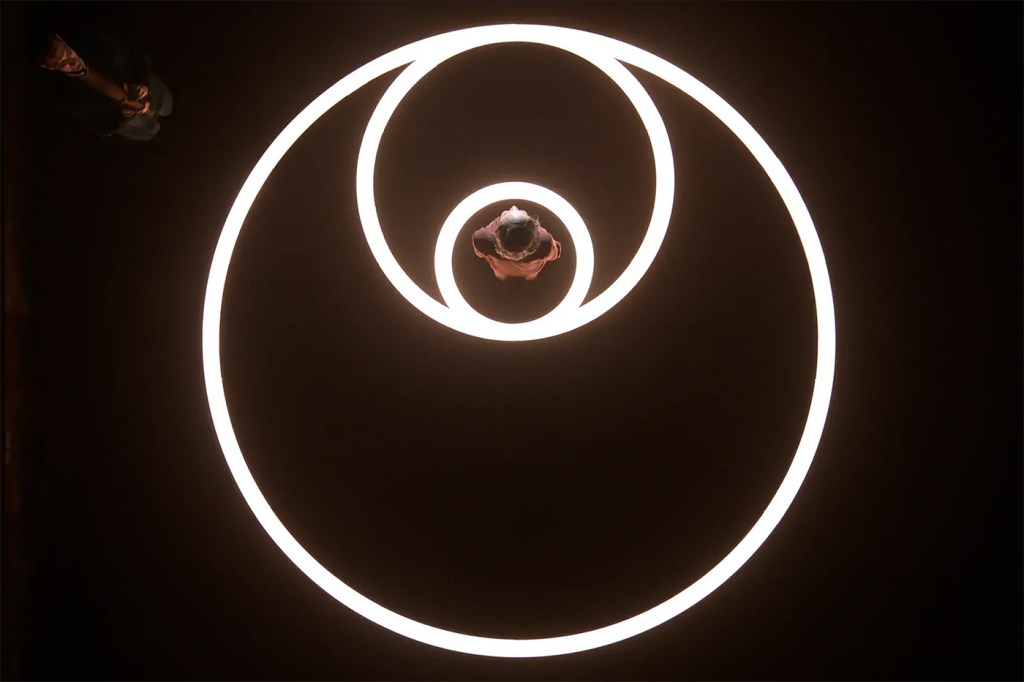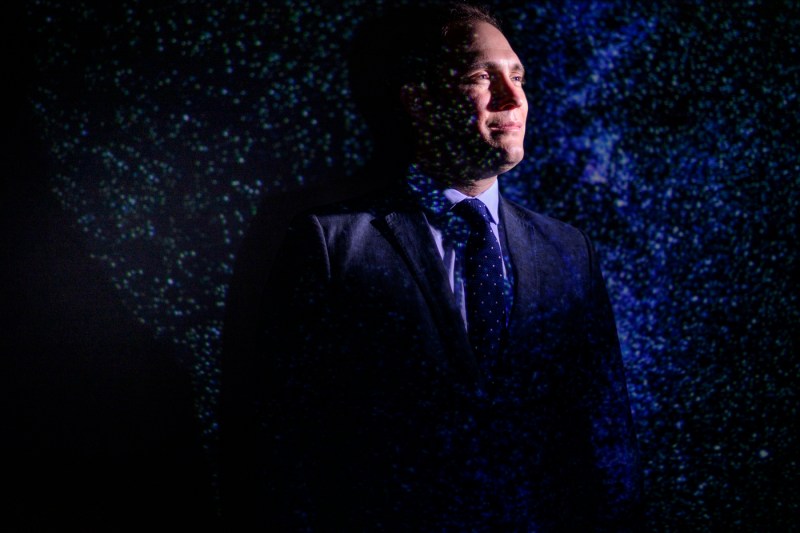Netflix’s big budget adaptation of Liu Cixin’s novel from the creators of “Game of Thrones” shows what happens when a still unsolved quantum mechanics question plays out on a galactic scale.
 Based on Liu Cixin’s book series, “3 Body Problem” takes a science fiction approach to complex quantum mechanics and astrophysics concepts, including the three-body problem. Netflix Photo
Based on Liu Cixin’s book series, “3 Body Problem” takes a science fiction approach to complex quantum mechanics and astrophysics concepts, including the three-body problem. Netflix Photo
“3 Body Problem,” Netflix’s new big-budget adaptation of Liu Cixin’s book series helmed by the creators behind “Game of Thrones,” puts the science in science fiction.
The series focuses on scientists as they attempt to solve a mystery that spans decades, continents and even galaxies. That means “3 Body Problem” throws some pretty complicated quantum mechanics and astrophysics concepts at the audience as it, sometimes literally, tries to bring these ideas down to earth.
However, at the core of the series is the three-body problem, a question that has stumped scientists for centuries.
What exactly is the three-body problem, and why is it still unsolvable? Jonathan Blazek, an assistant professor of physics at Northeastern University, explains that systems with two objects exerting gravitational force on one another, whether they’re particles or stars and planets, are predictable. Scientists have been able to solve this two-body problem and predict the orbits of objects since the days of Isaac Newton. But as soon as a third body enters the mix, the whole system gets thrown into chaos.
“The three-body problem is the statement that if you have three bodies gravitating toward each other under Newton’s law of gravitation, there is no general closed-form solution for that situation,” Blazek says. “Little differences get amplified and can lead to wildly unpredictable behavior in the future.”
 The three-body problem has been a compelling question for scientists for centuries because of it is seemingly simple yet deceptively complex, says Jonathan Blazek, assistant professor of physics at Northeastern University. Photo by Matthew Modoono/Northeastern University
The three-body problem has been a compelling question for scientists for centuries because of it is seemingly simple yet deceptively complex, says Jonathan Blazek, assistant professor of physics at Northeastern University. Photo by Matthew Modoono/Northeastern University
In “3 Body Problem,” like in Cixin’s book, this is a reality for aliens that live in a solar system with three suns. Since all three stars are exerting gravitational forces on each other, they end up throwing the solar system into chaos as they fling each other back and forth. For the Trisolarans, the name for these aliens, it means that when a sun is jettisoned far away, their planet freezes, and when a sun is thrown extremely close to their planet, it gets torched. Worse, because of the three-body problem, these movements are completely unpredictable.
For centuries, scientists have pondered the question of how to determine a stable starting point for three gravitational bodies that would result in predictable orbits. There is still no generalizable solution that can be taken out of theory and modeled in reality, although recently scientists have started to find some potentially creative solutions, including with models based on the movements of drunk people.
“If you want to [predict] what the solar system’s going to do, we can put all the planets and as many asteroids as we know into a computer code and basically say we’re going to calculate the force between everything and move everything forward a little bit,” Blazek says. “This works, but to the extent that you’re making some approximations … all of these things will eventually break down and your prediction is going to become inaccurate.”
Featured Stories
How did a container ship collision cause a Baltimore bridge to collapse? Structural engineer details possible design factors

How did a container ship collision cause a Baltimore bridge to collapse? Structural engineer details possible design factors
Meet the two Northeastern students trying to shake up Boston’s fashion scene with their vintage thrift shop venture

Meet the two Northeastern students trying to shake up Boston’s fashion scene with their vintage thrift shop venture
Drybar founder Alli Webb shares the ‘Messy Truth’ about her life and $255 million business sale

Drybar founder Alli Webb shares the ‘Messy Truth’ about her life and $255 million business sale
Why are more young people like Kate Middleton being diagnosed with cancer?

Why are more young people like Kate Middleton being diagnosed with cancer?
Blazek says the three-body problem has captivated scientific minds because it’s a seemingly simple problem. Most high school physics students learn Newton’s law of gravity and can reasonably calculate and predict the movement of two bodies.
Three-body systems, and more than three-body systems, also show up throughout the universe, so the question is incredibly relevant. Look no further than our solar system.
The relationship between the sun, Earth and our moon is a three-body system. But Blazek says since the sun exerts a stronger gravitational force on Earth and Earth does the same on the moon, it creates a pair of two-body systems with stable, predictable orbits –– for now.
Blazek says that although our solar system appears stable, there’s no guarantee that it will stay that way in the far future because there are still multi-body systems at play. Small changes like an asteroid hitting one of Jupiter’s moons and altering its orbit ever so slightly could eventually spiral into larger changes.
That doesn’t mean humanity will face a crisis like the one the Trisolarans face in “3 Body Problem.” These changes happen extremely slowly, but Blazek says it’s another reminder of why these concepts are interesting and important to think about in both science and science fiction.
“I don’t think anything is going to happen on the time scale of our week or even probably our species –– we have bigger problems than the instability of orbits in our solar system,” Blazek says. “But, that said, if you think about billions of years, during that period we don’t know that the orbits will stay as they currently are. There’s a good chance there will be some instability that changes how things look in the solar system.”





